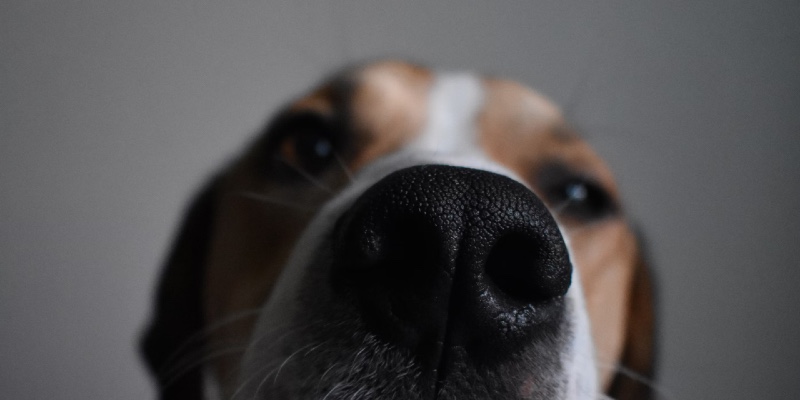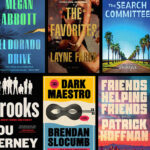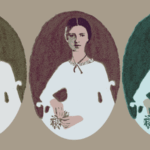Dogs are fascinating! They can be our companions, our comfort in times of stress, our alarm system for our homes, and even our work partners. Anyone who has ever taken a dog for a walk knows how important a dog’s olfactory world is to them and how convoluted the journey can be if you let your dogs go wherever they want. When that happens, a walk can take a very long time over a very short distance.
But what about dogs who are trained to partner with humans on search and rescue teams and in law enforcement? A dog trained to use its nose to find missing people or to track a runaway fugitive is a valuable resource, some well-trained dogs costing tens of thousands of dollars. But most dogs, even pets, can be trained for some type of nose work, an enjoyable pastime for both canines and humans. Although truth told, some types of dogs are going to take to it more naturally and/or willingly than others.
Decades ago, when our children were small, a toddler became lost in the mountains near our home. A whole community of volunteers searched for the child, but to no avail. Unfortunately, the child’s remains weren’t found until about a year later. But during that time, my husband—a veterinarian whom our now-adult children lovingly describe as the dogfather—decided we needed to train two of our dogs in search and rescue, just in case one of our kids wandered away from our campsite during a family outing.
We found a search and rescue training group in our county and signed up with the two of our four dogs that we thought would be most receptive to training: our Rottweiler named Ilsa and our Australian shepherd Jessie. Working dog breeds such as Rottweilers, hounds, shepherds, Labs, setters, and pointers, to name a few, seem to be the most motivated to sniff out all kinds of things with their noses, including people. But mixed breeds and other breeds might also excel.
Trainers may differ in their training techniques, but I’ll share how we started on this fabulous journey of nose work. The leader of our group selected a mountain park for our meetings, a spot filled with wide stretches of open grassland dotted with trees and rocky outcroppings, perfect places for a “missing person” to hide.
At the first meeting, our dogs were allowed about fifteen minutes playtime and they mingled and played together before we got down to work. But keep in mind that work also means play when it comes to dog training. Our trainer believed in lots of positive reinforcement—toys, treats, hugs, and pats—and baby steps that kept each lesson attainable and rewarding. Lessons were repeated at each level until the dog mastered that particular goal.
Each trainee brought a plastic bag containing their own scent article, a well-worn hat or dirty socks laden with scent. The first step was easy. The trainer held my dog, allowing Jessie to watch while I walked directly away from her at a distance of about fifty yards. Then I ducked behind a group of boulders and hid, although Jessie was allowed to watch me doing so. The trainer let Jessie smell my scent article in the bag and told her to “Search.” Keeping Jessie on leash, the trainer encouraged her to sniff the ground while helping guide her to my hiding place. Jessie earned hugs and treats when she “found” me.
The next step was similar but without the visual cue. The trainer held Jessie behind one of the cars to block her view of me leaving. I went straight to a different pile of boulders to hide, one the trainer previously indicated so she would know where I was. Once I was hidden, the trainer led Jessie to the spot where I’d started and gave her a whiff of my scent article.
After giving the “Search” cue, the trainer encouraged Jessie to use her nose to find me. And she did! She wiggled and wagged when received with hugs and praise again. Our trainer said that most dogs love this activity, simply for the joy of finding someone, especially their own human. It was interesting to observe our dogs thinking things through and solving the puzzle of “Where is your person?”
Lesson three seemed to be a big step for many of the dogs. Again, our trainer blocked Jessie’s sight while I walked away, made a ninety-degree turn in the track, marking it with a flagged spike, and then hid behind a barrier of rock.
It was important for the handler to know where I made the turn, because if Jessie didn’t have her nose to the ground at that time and missed it, the trainer would take her back and encourage her to use her nose again. But Jessie had already clued into the “nose game.” Although she initially overshot the turn, she corrected herself, came back to find the scent, and followed the track to find me.
This stage is when our trainer recognized that Ilsa was air scenting, finding her target through scent on the air rather than tracking on the ground. Ilsa wanted to cut the corner where my husband turned and go directly to his hiding spot. I think she knew where he was even in the beginning. Our trainer encouraged Ilsa to use her nose on the ground, although she seemed thrilled that Ilsa might develop the ability to use both types of scenting in time, ground tracking and air scenting.
And then we made the switch. Our dogs had been working for an experienced handler to find their own human, but the next lesson involved us becoming handlers while our dogs searched for the trainer. It was a hard transition for some.
After mastering that level, we moved on to more difficult lessons involving more length and several turns. Instead of familiar targets, our dogs were challenged to find strangers. At home, we practiced with our children laying out tracks and letting Jessie and Ilsa find them. We switched up handlers, my husband and I trading dogs so they would work for both of us. It was a great family pastime and it gave us all an opportunity to have fun.
If you like reading books with working dogs in them, try the works of authors like Kathleen Donnelly, Sara Driscoll, Alex Kava, Paula Munier, Jodi Burnett, Jeffrey B. Burton, and Sheri Lewis Wohl, to name a few. I invite you to also read my Timber Creek K-9 Mysteries, in which the amazing Robo, a German shepherd police dog, tracks down something or someone in every episode. Happy reading! And happy playtime with your dog!
***


















